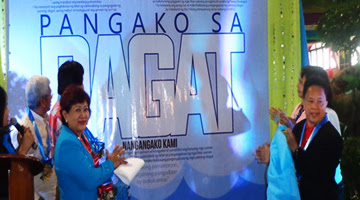Corn silage production as an enterprise
Enterprising farmers can look at corn silage production as an alternative source of livelihood. Corn silage is a form of carabao feed made from chopped corn plants that are sealed tight in a silo or container and then fermented for two to three weeks. It is a nutritious feed for carabaos as it is a good source of energy and protein.
Isagani Cajucom, a farmer entrepreneur, is an adopter of the silage production technology. He is a farmer leader for the Silage Production project of the Philippine Carabao Center (PCC) and the Philippine Council for Agriculture, Aquatic, and Natural Resources Research and Development of the Department of Science and Technology (DOST-PCAARRD). DOST-PCAARRD’s supports the project through its Technomart (TM) modality.
Cajucom has been producing and marketing corn silage in Nueva Ecija. During one cycle of planting and harvesting, he produced 54,729 kilograms of corn silage in his two-hectare lot which sold at P191,551.50. It provided him a total net income of P66,661.60 after deducting the cost for labor, planting materials, pesticide and herbicide application, irrigation, materials for chopping, and transportation, among others.
In a span of two years, Cajucom has earned a total net income of P582,475.80 from four cycles of planting and harvesting.
Cajucom said that the market for corn silage is huge. In the Philippines alone, according to the Philippine Statistics Authority, there are 2.86 million carabao heads as of July 2014. In a day, a farmer engaged in dairy carabao production needs about 25 to 30kilograms (kg) of feeds in 24 hours for a carabao weighing from 400 to 500kg. Not all farmers have access to open pastures where they can let their carabaos graze, hence the potential of corn silage production. Currently, aside from Nueva Ecija,Cajucom sees demand from Quezon, Batangas, and Pangasinan.
Cajucom, however, admits that he has also encountered some constraints in corn silage production, including the availability of corn seeds, varying cost of labor, availability of water, and the availability of forage chopper.
Cajucom also noted that corn silage production won’t hinder regular corn production for food and poultry feeds, as both can be a farmer’s form of livelihood. According to Cajucom, a farmer can gauge where he can profit more by looking at the price of corn in the market.
Cajucom shared his experience during the Pistang Kalabaw held at the national headquarters of PCC, at the Science City of Muñoz, Nueva Ecija. Pistang Kalabaw is part of the Farms and Industry Encounters through Science and Technology Agenda (FIESTA), an initiative of DOST-PCAARRD. It is a technology transfer modality that aims to bridge farmers and the micro, small, and medium-scale industries through a science and technology-based platform.
Silage production technology is one of the many R&D outputs supported by DOST-PCAARRD in keeping with its commitment under DOST’s Outcome One: to provide science-based know-how and tools that will enable the agricultural sector to raise productivity to world-class standards.
DOST’s avowal of public service once more takes center stage as it celebrates this year’s National Science and Technology Week on July 24-28 at SMX Mall of Asia, Pasay City with Philippines: A Science Nation Innovating for Global Competitiveness as its theme.
Source: http://www.pcaarrd.dost.gov.ph/home/portal/index.php/quick-information-dispatch/2561-corn-silage-production-as-an-enterprise-
Tuesday, December 13, 2016
Agriculture, DA News, Sustainable farming, Technology-Others














